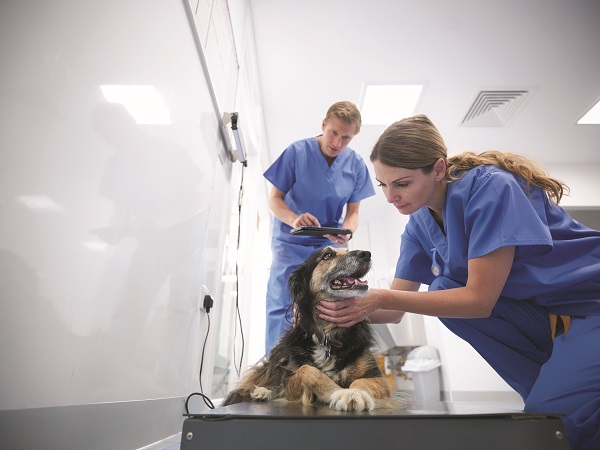
Pet parents often show love for their pets with food. However, that extra “love” can lead to weight gain, which can increase the risk of developing other medical conditions.
More than 50% of pets are overweight, but 90% of pet parents with an overweight pet don’t realize it, according to research from Hill’s Pet Nutrition, a global leader in science-led nutrition.
To help transform the lives of pets, Drs. Vernard Hodges and Terrence Ferguson, stars of Nat Geo Wild’s “Critter Fixers: Country Vets,” are encouraging pet parents to take a proactive approach to maintaining their pet’s weight.
“As veterinarians, we want every pet to live a long and healthy life,” Hodges said. “That’s why pet parents should actively monitor their pet’s weight and address it in real time with the guidance of their veterinarian. We are proud to be a part of Hill’s ‘End Pet Obesity’ campaign to help pet parents learn about the impact of even a few extra pounds and equip them with the tools and resources they need to help their pets achieve and maintain a healthy weight.”
Consider these simple steps to get started:
Take the L.O.V.E. Test
To help assess a pet’s weight, use the L.O.V.E. Test, which includes four simple actions:
Locate the pet’s ribs
Observe from above
View from the side
Evaluate feeding behavior
“Sometimes, under all their beautiful fur, it’s hard to realize our pets have gained weight, and even just a few extra pounds can have an impact on their energy and overall wellness,” Ferguson said. “Taking the L.O.V.E test is an easy way to evaluate a pet’s body condition to determine if it’s time to take action.”
Schedule a Visit with a Veterinarian
Pet parents who have concerns about their pet’s weight should seek their veterinarian’s guidance. Conversation starters include:
Is my pet at an ideal weight?
How can I help my pet reach an ideal weight?
How can food help manage my pet’s weight?
Switch to the Right Food
“Obesity is one of the greatest health risks for pets, and what a pet eats is one of the most important decisions a pet parent can make,” Ferguson said. “Whether your pet is a new addition to the family or has just eaten a little too much, now is a great time for pet parents to reset nutritional habits and make sure their pet is at a healthy weight – starting with the food they feed.”
Pet parents should work with their veterinarian to choose the right food to support their pet’s weight loss journey. Weight management products can help pets achieve an ideal weight. For obese pets, veterinarians may recommend a therapeutic food.
“We have been studying the impact of nutrition on how pets’ bodies function for over a decade,” said Dr. Karen Shenoy, chief veterinary officer of Hill’s Pet Nutrition U.S. “We learned lean pets have a different biology than overweight pets. With the guidance of a veterinarian, it can be as simple as feeding the right kind of ‘love’ to lose the weight.”
To learn more and access free tools and resources for pet weight management, visit EndPetObesity.com.
Photo courtesy of Getty Images
Related Articles & Free Email Newsletter Sign Up
6 Steps to Use When Introducing a Cat to a Dog
The Best Houseplants That are Safe for Cats and Dogs

Comment here